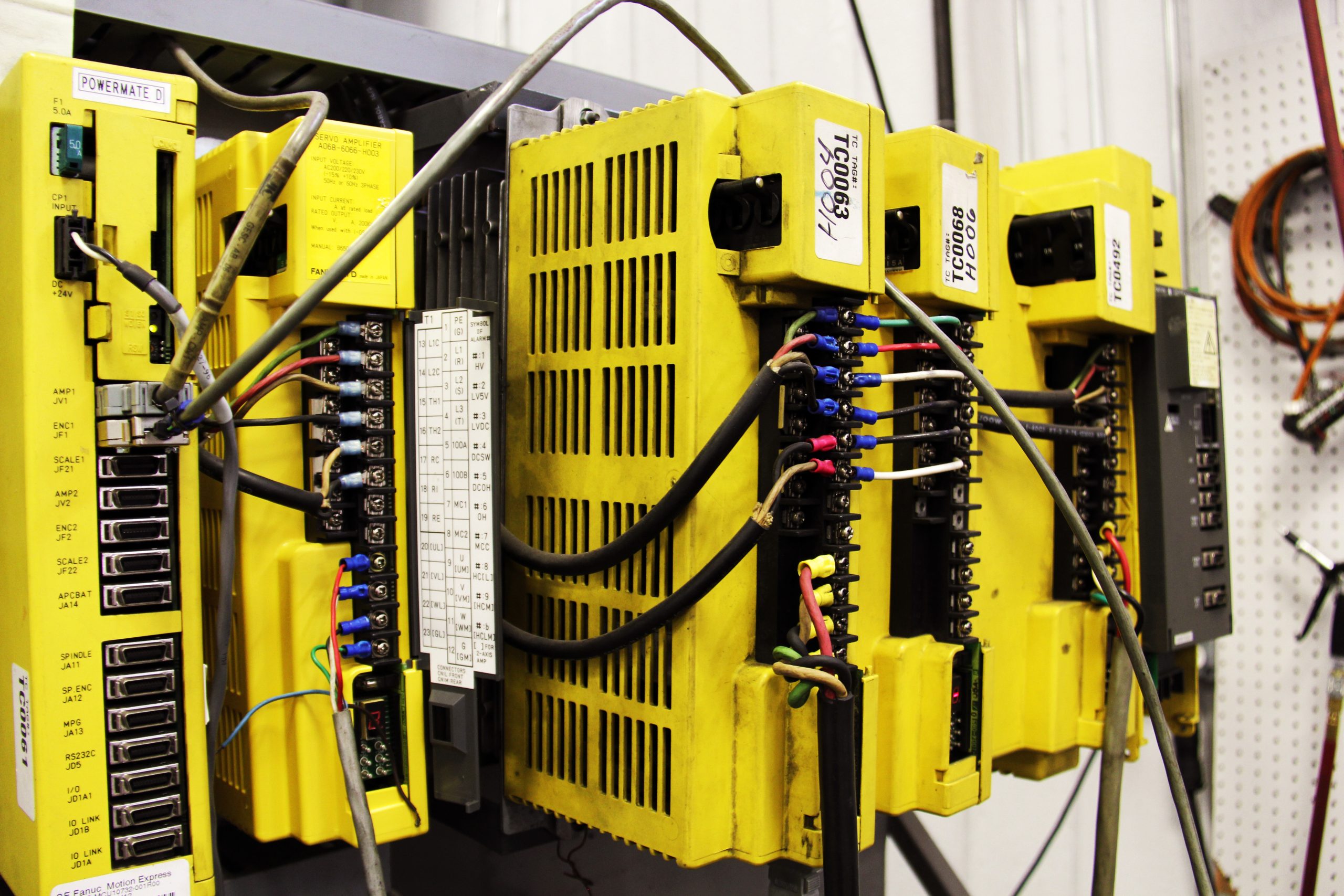If you have a Fanuc CNC machine tool that uses FANUC servo amplifiers, you should know what to do when one of them goes wrong. This article will give you a basic understanding of what to look for when diagnosing a faulty servo amplifier or motor.
First, use a megohmmeter to test the power cables between the motor and the servo amplifier. If the resistance is too high, then it means that the line is bad.
Power
When building a Fanuc servo amps system, your power supply is one of the most important pieces of the puzzle. Your power supply delivers voltage to the motor windings that drive the current produced by the servo amplifier.
Your servo amplifier turns this motor current into torque that, divided by inertia, produces acceleration. When you add the acceleration to the position data and velocity data passes from the pulse coder, you have motion.
The servo amp does a lot more than deliver power to the load. It also stores mechanical energy.
Once the load is accelerated, this stored mechanical energy must be dissipated to bring the load to rest.
This is why servo amplifiers have built-in regeneration devices. The regenerative design dissipates less heat than non-regenerative systems and eliminates the need for discharge resistors.
Communication
Communication is one of the fundamentals of any servo system. It’s how position, velocity and current feedback are transmitted between the controller and amplifier.
Fanuc servo amplifiers communicate with the GE Fanuc controller via a PWM interface that utilizes the standard servo protocol to transfer data. This improves system throughput and provides higher accuracy when compared to serial communication systems.
We stock a range of ALPHA and ai drive series modular amps with compact size, optical fiber communication energy-saving features that combine enhanced performance with world-famous FANUC reliability. These models include aiPS (power supply), aiSP (spindle amplifier) and aiSV (servo amplifier). They also have built-in leakage detection functionality and a safe torque-off function in the servo and spindle amplifier. Maintenance is simple and requires no disassembly.
Current
When Fanuc servo amps display Alarm 8, 9, or A, they have trouble with a short circuit or high current in the motor or amplifier. Identifying which axis is at fault is critical in getting this fixed quickly.
Grab a megohmmeter and test the insulation resistance from the motor power leads to the ground to determine if the motor or cables are bad.
If the measurements are good, your motor is probably bad, and you’ll need to replace it or get it repaired by a professional.
DNC holds a large inventory of Fanuc DC Analog and AC motors and full repair and fault diagnosis service of AC servo amplifiers. Services include service exchange, outright sale of refurbished stock and new AC axis amplifier drive units if required.
Alarms
A Fanuc Servo Amplifier will sometimes alarm with a code of 8 or 9. This indicates a high current or short circuit in the amplifier or motor.
The first step in determining what the alarm tells you is deciding which axis is at fault. This can be tricky.
If the alarm occurs before the motor is powered up, it might be a binding condition on one of the axes or an obstruction.
It may also be a bad contactor on the motor. If this is the case, you can usually replace that contactor.









